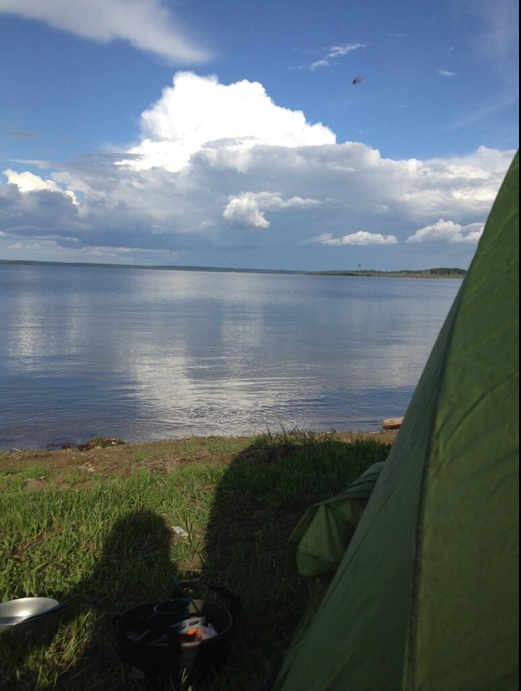Please help rabble.ca support democratic movements like Idle No More. Become a monthly supporter.
This weekend, the Keepers of the Athabasca and their allies will host the fifth and final annual Tar Sands Healing Walk, an eight-hour tour of the massive development sites of Big Oil giants Syncrude and Suncor. The walk, through mines, tailings ponds and upgraders, will be accompanied by several workshops, panels, stories and performances — culminating with a giant feast and prayer Saturday night.
From its humble beginnings in 2010, the Healing Walk has grown every year until nearly 1000 activists, allies and traditional caretakers gathered last year. This year’s walk, the organizers have decided, will be the last. “We do this not because the problem has been solved, or because justice has been served, or practices of honour and integrity have been taken up in the place of destruction and mistreatment,” they explain. “We do this not because our people have stopped dying from the chemicals that are now inextricable from the landscape.
“Rather, we do this because the story of the Athabasca region is only one small piece of the immense scope of this issue, these practices, of the land that’s being abused, and of the people who are being so brutally mistreated.”
The stories told by previous walks have been immense and powerful. Last year, on the eve of the walk, a baby was born on a buffalo robe inside a teepee. Many elders believed the baby boy’s birth fulfilled a prophecy announcing the time to act in the face of violence committed against the Earth. Vancouver-based writer Emma Pullman broke a story on an unreported oil spill at Cold Lake — one that continues to seep raw bitumen into the ground to this day. Cree campaigner Clayton Thomas-Muller wrote about poisoned water and buffalo stock, and how most of all, it is our spirits that need solace and repair.
This year, the note struck by the Walk is at once sombre and hopeful. Sombre, because despite the walks, development and environmental destruction continues to accelerate at a dazzling pace. Hopeful, however, because there can be no change without resistance — and resistance continues to grow.

There are now anti-Tar Sands walks popping up across the country. In the east, the Peoples for Mother Earth just finished walking the proposed Energy East and Line 9 infrastructure that would carry bitumen across the province of Quebec. Its sister march, Walk for Mother Earth, picked up the route and carried its sentiment to Ottawa this past Sunday. On Saturday, dozens of solidarity walks will take place across North America.
What makes the Athabasca Healing Walk so special, however, is its instinctive understanding of beginnings. In 1998, six Dene residents of Deline, Northwest Territories travelled to Hiroshima, Japan to apologize for the dropping of atomic bombs during the Second World War. Radium mined in Deline and transported by Dene workers in the early twentieth century had been used in the production of Little Boy and Fat Man — against the knowledge and without the consent of the Dene people. Residents of Deline — who themselves had seen a generation of men die of cancer because of wilful neglect on the part of the Canadian government to communicate the dangers of working with radioactive material — were devastated to learn they had been party — willing or not — to such awesome destruction.
So too in Athabasca, where all pipelines begin. It understands that the recently approved Northern Gateway pipeline is not a British Columbia issue. Nor Energy East Ontario and Quebec’s. Without the environmental wreckage of Tar Sands expansion, there would be no need for pipelines. Heal the Athabasca, heal the nation. This is where pipelines — and resistance — begin.
“It’s time for our people to rise up and take back our role as caretakers and stewards of the land,” declares organizer Eriel Deranger in a prominent social media image. The people who have called this land home for generations want to take it back from those who have done it such greivous injury. On this final Healing Walk in the heart of the Athabasca, part of the traditional territories of the Cree and Dene peoples, the notion of “home” has never stood for so much for so many.
The fifth and final Tar Sands Healing Walk will take place June 27-29, 2014 near Fort MacMurray, Alberta. Michael will be in Fort MacMurray to take part in the walk, workshops and ceremonies.




